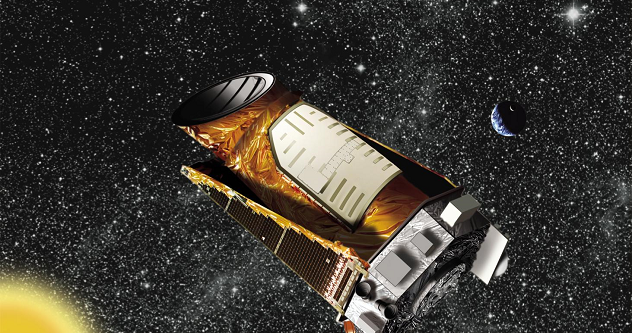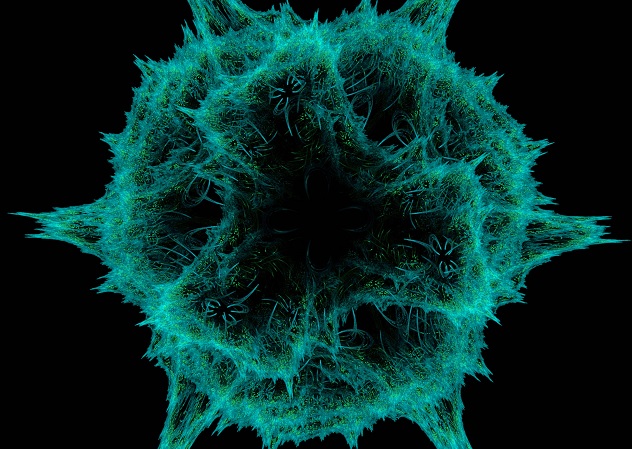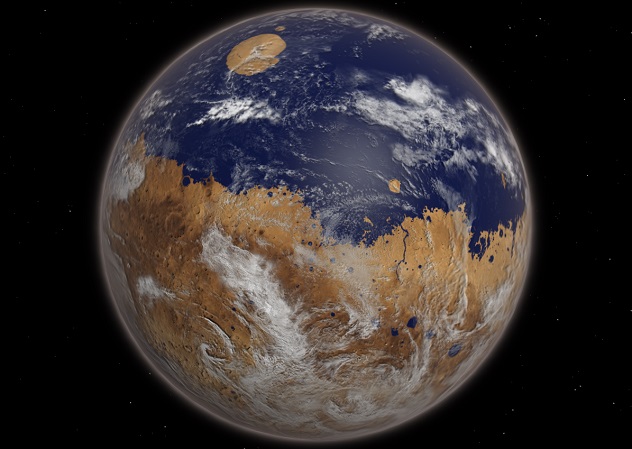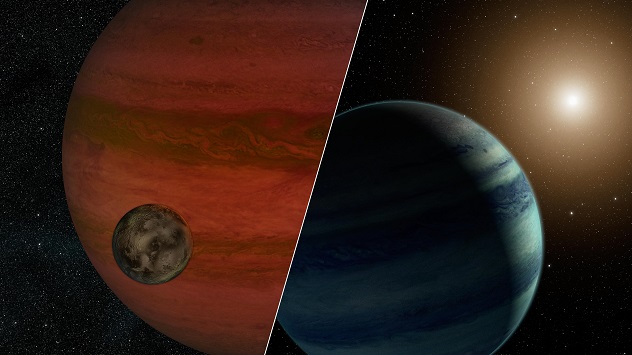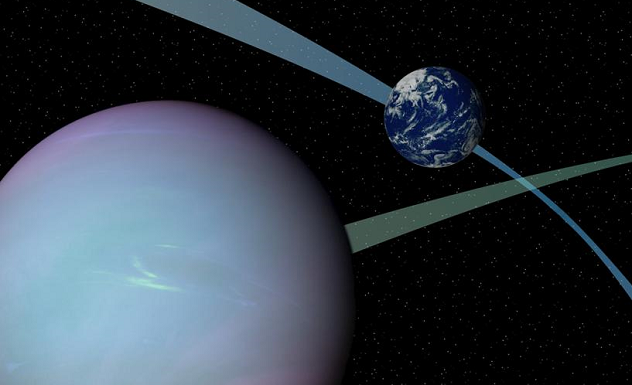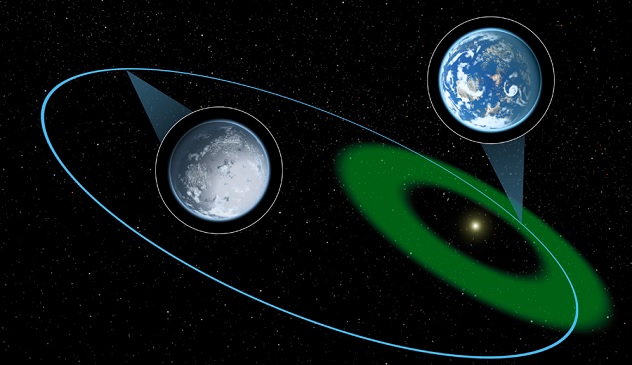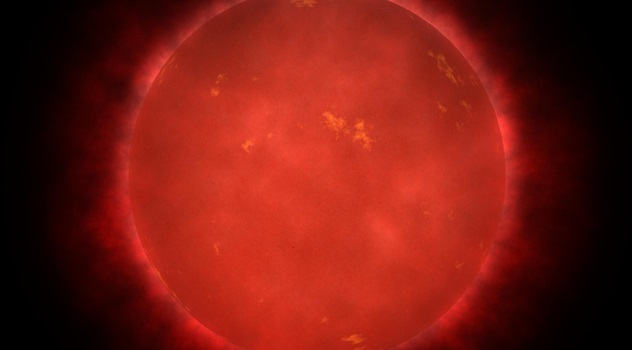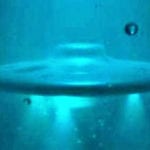10NASA Predicts Alien Life Will Be Found Within 20 Years
In the words of Matt Mountain, director at the Space Telescope Science Institute in Baltimore, “Imagine the moment when the world wakes up, and the human race realizes that its long loneliness in time and space may be over . . . It’s within our grasp to pull off a discovery that will change the world forever.” Using ground and space-based technology, NASA scientists predict that we’ll find alien life in the Milky Way galaxy within the next 20 years. Launched in 2009, the Kepler Space Telescope (pictured) has helped scientists find thousands of exoplanets (planets outside our solar system). Kepler discovers a planet when it crosses in front of a star, causing a small drop in the star’s brightness. Based on data from Kepler, NASA scientists believe that in our galaxy alone, 100 million planets may be home to alien life. But it’s the upcoming James Webb Space Telescope (scheduled for a 2018 launch) that will first give us the capability to indirectly detect life on other planets. The Webb telescope searches for gases in a planet’s atmosphere that are generated by life. The ultimate goal is to find Earth 2.0, a twin to our own planet.
9The Alien Life We Find May Not Be Intelligent
The Webb Telescope and its successors will search for biosignatures in the atmospheres of exoplanets, such as molecular water, oxygen, and carbon dioxide. But even if a biosignature is detected, it won’t tell us whether the life on that exoplanet is intelligent or not. Such alien life may be single-celled organisms like amoebas, rather than complex beings that can communicate with us. We’re also limited in our search for life by our prejudices and lack of imagination. We assume there must be carbon-based life like us, and that we’re the standard by which intelligence is judged. Explaining this failure in creative thought, Carolyn Porco of the Space Science Institute says, “Scientists don’t go off and think completely wild and crazy things unless they have some evidence that leads them to do that.” Other scientists such as Peter Ward, coauthor of Rare Earth: Why Complex Life Is Uncommon in the Universe, believe that intelligent alien life will be short-lived. Ward assumes that other species will have global warming, too many people, no food, and eventual chaos that destroys their civilizations. He foresees the same for us.
8Mars May Have Supported Life Before—And May Again
Mars is currently too cold to house liquid water and support life. But NASA’s Opportunity Rover—an all-terrain vehicle that collects and analyzes rocks on Mars—has shown that about four billion years ago, the planet had fresh water and mud that could have supported life. Another past source of water and possible life sits on the slopes of Mars’s third-tallest volcano, Arsia Mons. Around 210 million years ago, this volcano erupted beneath a vast glacier. The volcano’s heat caused the ice to melt, forming lakes in the glacier like liquid bubbles in a partially frozen ice cube. The lakes may have existed long enough for microbial life to have formed there. It’s possible that some simple organisms on Earth may be able to survive on Mars today. Methanogens, for example, use hydrogen and carbon dioxide to produce methane, and don’t need oxygen, organic nutrients, or light. They’re able to survive temperature extremes such as those found during Martian freeze-thaw cycles. So when scientists found methane in Mars’ atmosphere in 2004, they questioned whether methanogens already inhabit the subsurface of Mars. As we travel to Mars, though, scientists are concerned that we may contaminate the planet’s environment with microorganisms from Earth. That may make it difficult to determine whether life forms found on Mars originated there.
7NASA Plans To Search For Life On Jupiter’s Moon
NASA is planning to launch a mission in the 2020s to Europa, one of Jupiter’s moons. One of its high priorities is determining if the moon’s surface is habitable and identifying locations where future missions may land a spacecraft. In addition, NASA is on the search for life (possibly intelligent) beneath the moon’s thick, icy surface. In an interview with The Guardian, NASA’s chief scientist Dr. Ellen Stofan said, “We know there is an ocean under that icy crust. There are plumes of water coming out of the cracks in the south polar region. There’s orange gunk all over the surface—what the heck is that stuff?” The spacecraft sent to Europa may either orbit or perform multiple flybys of the moon, possibly flying through those plumes of water in the southern region. That would let us collect samples of Europa’s inner layers without the risk and high cost of landing the spacecraft. But any mission must protect the spacecraft and instruments from the high-radiation environment. NASA also wants to ensure that we don’t contaminate Europa with organisms carried from Earth.
6Exomoons May Be Detected Through Radio Emissions
Until now, scientists have been technologically limited in their search for life outside our solar system to exoplanets. But physicists from the University of Texas believe they’ve discovered a way to detect exomoons (moons orbiting exoplanets) through radio emissions. This may greatly expand the number of habitable bodies on which we may find alien life. Using their knowledge of radio emissions caused by the interaction between Jupiter’s magnetic field and the planet’s moon Io, these scientists have extrapolated formulas to search for radio emissions from exomoons. They also believe that Alfven waves (the rippling of plasma caused by the interaction between a planet’s magnetic field and its moon), may help us spot exomoons in a similar way. In our solar system, moons such as Europa and Saturn’s Enceladus have the potential to support life based on their distance from the Sun, their atmosphere, and the possible existence of water. But as our radio telescopes get more powerful and more advanced, scientists hope to conclusively study more distant bodies. Currently, two exoplanets with possible exomoons are the main candidates for hosting life: Gliese 876b (approximately 15 light-years away) and Epsilon Eridani b (approximately 11 light-years away). Both are gas giants (as are most exoplanets we’ve discovered), but many are in the habitable zones of their stars. Any exomoons orbiting these planets may have the potential to support life.
5Advanced Alien Life May Be Detected By Pollution
Until now, scientists have searched for alien life by looking for exoplanets rich in gases like oxygen, carbon dioxide, and methane. But since the Webb Telescope should be able to detect ozone-destroying chlorofluorocarbons, some researchers now suggest we consider looking for industrial pollution to find advanced alien life. While we hope to detect an alien civilization that’s still alive, it’s very feasible that we might find an extinct culture that destroyed itself. Scientists believe the best way to tell if a civilization still exists is by searching for both long-lived pollutants (that stay in the atmosphere for tens of thousands of years) and short-lived pollutants (that last only a decade or so). If the Webb Telescope detects only long-lived pollutants, then the alien civilization may be extinct. But this method does have its limitations. The Webb Telescope can so far only spot pollutants on an exoplanet orbiting a white dwarf (the remnant of a dead star, roughly the size of our Sun). Dead stars typically equal dead civilizations, so the search for actively polluted life might have to wait until our technology grows even more advanced.
4Oceans May Make Exoplanets More Habitable
To determine which planets may support intelligent life, scientists usually focus their computer models on the atmospheres of planets within a star’s habitable zone. But new research suggests that our models should also factor in the impact of large, liquid oceans. Let’s use our own solar system as an example. Earth has a stable environment that supports life, but Mars—on the outer edge of our habitable zone—is frozen. It has temperatures that may fluctuate by over 100 degrees Celsius (212 °F). Then there’s Venus, on the inside edge of our habitable zone and scorching hot. Neither planet is a good candidate to support intelligent life, though they may host microorganisms that can survive in extreme environments. Unlike Earth, neither Mars nor Venus currently has a liquid ocean. According to David Stevens of the University of East Anglia, “Oceans have an immense capacity to control climate. They are beneficial because they cause the surface temperature to respond very slowly to seasonal changes in solar heating. And they help ensure that temperature swings across a planet are kept to tolerable levels.” That’s why Stevens believes we should factor the presence of oceans into our models when searching for alien life.
3‘Tilt-A-Worlds’ May Expand Habitable Space
Exoplanets with fluctuating tilts in their orbits may support life in places where fixed-spin planets like Earth couldn’t. That’s because these “tilt-a-worlds” have a different relationship to the planets around them. Earth and its planetary neighbors circle the Sun on about the same plane. But tilt-a-worlds and their neighboring planets orbit at angles, tugging at each other’s orbital planes in a way that occasionally spins a tilt-a-world’s poles toward its host star. The spinning may resemble the wobbling of a child’s top when rotating at a slow speed. Tilt-a-worlds are more likely than fixed-spin planets to have liquid surface water. That’s because the heat from a host star is more evenly distributed on the surface of a tilt-a-world, especially when its poles are turned toward its sun. The planet’s ice caps will melt quickly, creating surface water and making the planet more likely to support life. This characteristic of tilt-a-worlds may expand the edge of a star’s habitable zone by 10 to 20 percent past the point where fixed-spin planets would freeze over.
2Eccentric Exoplanets May Host Extreme Life Forms
For the most part, astronomers search for life on exoplanets that reside within their star’s habitable zone. But some “eccentric” exoplanets remain in the habitable zone only part of the time. When outside the zone, they may experience molten hot or frigid temperatures. Even so, these planets may still support life. Scientists point to certain microscopic life forms on Earth that can live in extreme conditions—both on Earth and in space—such as bacteria, lichen, and spores. This suggests that a star’s habitable zone may extend farther than initially believed. But we have to change our thinking to include planets hostile to life on Earth, but favorable to life forms that thrive in, or at least tolerate, harsh conditions.
1Researchers Question Whether We’re Ready For Contact With Alien Life
NASA is taking an aggressive approach to finding alien life in our universe. The Search for Extraterrestrial Intelligence (SETI) project has also become more ambitious in its efforts to contact alien civilizations. SETI wants to move beyond the mere searching and tracking of extraterrestrial signals, and start actively sending messages through space to identify our position to others. But contacting intelligent alien life may be a danger we’re not prepared to handle. Stephen Hawking has warned that a superior civilization would most likely use their power to dominate us. There is also concern that NASA and SETI are overstepping ethical boundaries. As neuropsychologist Gabriel G. de la Torre asks, “Can such a decision be taken on behalf of the whole planet? What would happen if it was successful and ‘someone’ received our signal? Are we prepared for this type of contact?” Based on a survey of college students, de la Torre believes that the general public currently lacks the knowledge and preparation needed to deal with intelligent alien contact. Most people’s viewpoints are also influenced by their religious beliefs.
+The Search For Alien Life Isn’t As Easy As We Thought
The technology we use to hunt down alien life has greatly improved, but the search still isn’t nearly as easy as we originally thought. For example, biosignatures are generally believed to be evidence of life, either past or present. But scientists have discovered lifeless planets with lifeless moons that yield the same biosignatures that we typically see as evidence of life. This means our current methods for detecting life on exoplanets may easily produce false positives. In addition, the existence of life on other planets may be far more unlikely than we thought. Red dwarf stars, which are smaller and cooler than our Sun, are the most common stars in our universe. But our latest information shows that exoplanets residing in a red dwarf’s habitable zone may have their atmospheres destroyed by extremely harsh weather.
